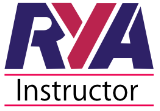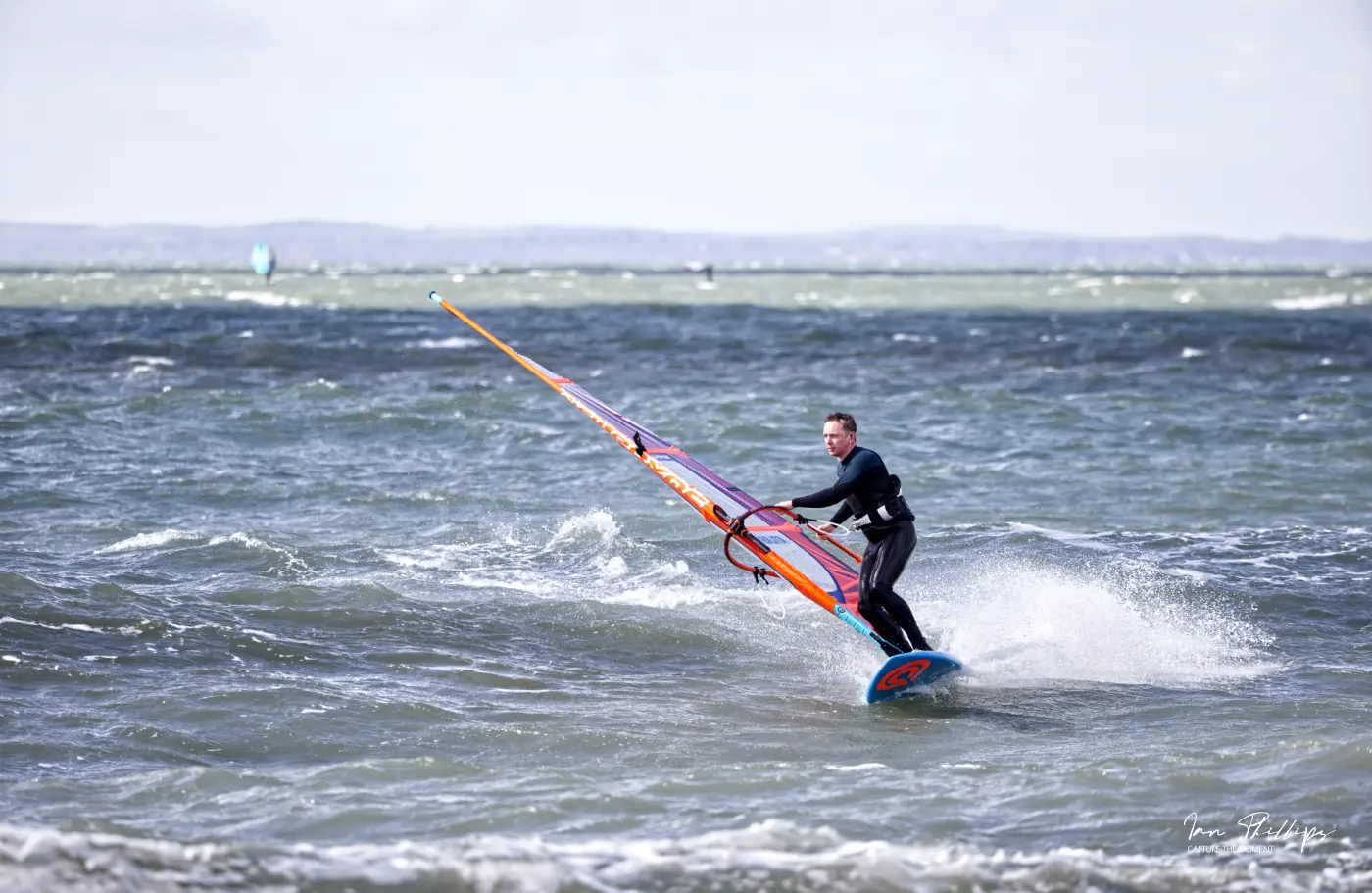Let's talk about what you need to look at and consider when choosing a surf sup board
Having that knowledge is so important when you’re looking to take up a new sport or advance further. Our stand up paddleboard guides, give you an easy way to gets answers to those burning questions.
We have a vast amount of surfing experience with our own personal experience and our sup surfing lessons and as such, we know how our boards work. We’ve tried them in a wide range of conditions all over europe and are happy to share some insights with you here.
What is a surf sup?
A surf sup is a board that is designed to perform in waves. This type of performance involves:
- being able to turn easily on the wave
- quick to accelerate
- easy to handle and manoeuvre on the water
When you’re looking at the boards on the market, you’ll see that they come in a range of sizes and shapes, so we’ll touch on that in a bit.
“An important thing to realise, is any board can be surfed on a wave, but not all boards can surf properly.”
We’re not going to discuss inflatable boards in this guide, as I’d like to focus on real surf shapes which are more refined and specific than current inflatable paddleboards offer.
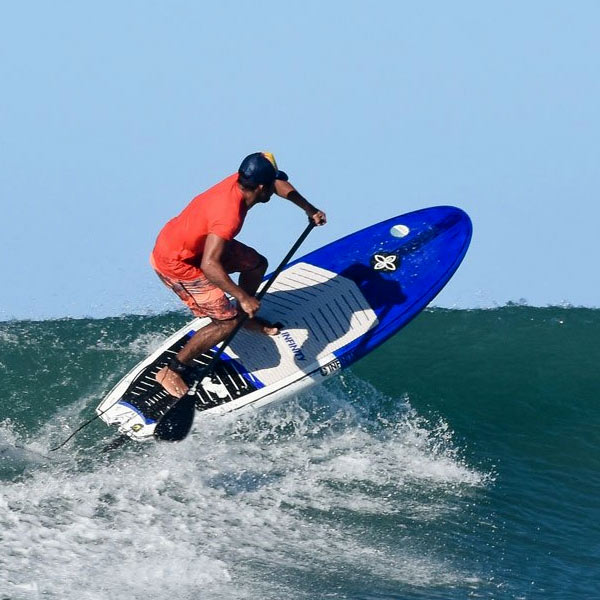
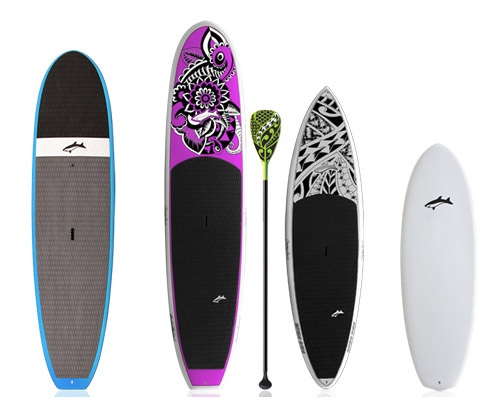
What do the shapes mean?
Our picture shows 4 shapes, each one being slightly different in purpose and performance that you may come across when choosing a surf sup board.
.
- This is a nose rider, an old school shape that isn’t fast and is designed for being a bit groovy. It’s got very parallel rails (edges in the middle), but more importantly it is very flat, not much of a rocker.
- A general all round longboard like this is great for general paddling and surfing. This board is 11ft long, has a gentle rocker line and is very stable. You can’t slash this board about in hollow waves, but tend to ride it in a more relaxed style.
- A performance short board with pin nose and tail. Very fast and highly manoeuvrable, they can be used in big surf, hollow surf, but do require a more advanced surfer to ride them.
- This is a bit of a hybrid, often called a Mini Mal. They don’t always come this small. They’re fun, short boards, easier to paddle than high-performance boards, delivering huge smiles.
Jimmy Lewis Super Frank
I have a long and close relationship with the Jimmy Lewis Super Frank, as it was a board that we prompted Jimmy to make a few years ago.
It’s a mix of fun, easy paddle and surf sup along with tight little slasher if you got the skills.
Having a slightly longer mid, wide point you have plenty of stability, whilst having a really manoeuvrable tail and fin setup.
Infinity RNB
Much like the Jimmy Lewis Super Frank, the Infinity RNB is a serious player, with a friendly interface.
Rails being a bit more parallel, the tail gives a powerful driving platform to drive off bottom turns, whilst the flatter rockerline delivers big speed.
I absolutely love this board and if you can go for the carbon it really is worth the extra money.

What do the shapes mean?
Our picture shows 4 shapes, each one being slightly different in purpose and performance that you may come across when choosing a surf sup board.
.
- This is a nose rider, an old school shape that isn’t fast and is designed for being a bit groovy. It’s got very parallel rails (edges in the middle), but more importantly it is very flat, not much of a rocker.
- A general all round longboard like this is great for general paddling and surfing. This board is 11ft long, has a gentle rocker line and is very stable. You can’t slash this board about in hollow waves, but tend to ride it in a more relaxed style.
- A performance short board with pin nose and tail. Very fast and highly manoeuvrable, they can be used in big surf, hollow surf, but do require a more advanced surfer to ride them.
- This is a bit of a hybrid, often called a Mini Mal. They don’t always come this small. They’re fun, short boards, easier to paddle than high-performance boards, delivering huge smiles.
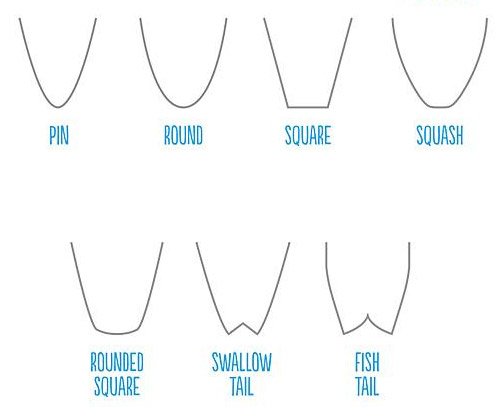
Tail shapes
So many shapes, but what do they do, I hear you ask.
Beginners
If you’re a beginner to sup surfing, then it is important to not get hung up on kit just yet.
You can surf pretty much any board, so it’s important to get going before throwing money at it.
If you’ve got an isup, then go for it, but do bear in mind that they do not perform like proper shaped hard boards.
If you can get a hard board, then go for something about 10ft long as this will give you plenty of performance and room to learn.
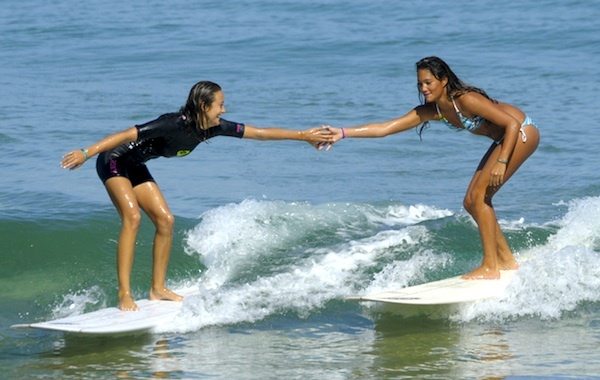

Quality and build
Surf sups are mostly glass fibre or carbon and as such, can end up taking a few whacks from a paddle, so we always recommend rail taping them when they are new.
We have a blog on this to show how best to rail tape your board, so go check it out.

Advancing paddlers
Don’t feel forced to progress, by simply downsizing to more rad style boards as this may not the right thing or your style and location.
If you’re moving on with your skills, then going down in size will open up more advanced moves, but that could be a simple shift to a 9-10ft board that will deliver more speed and turning.
When considering better boards, look at your local waves, does it get windy and choppy, how big are you as volume could become an issue as will balance.
For me at 95kgs, I ride boards down to 115 litres, but that’s when it is super clean waves. If it is choppy then I go bigger in volume, but also longer board as that makes the board glide and paddle easier out through the break.
Most of my pals who aren’t beach locals, so have less time on the water have boards about 9’5 like the Jimmy Lewis Super Frank, Infinity New Deal, whilst some jump down to more radical shapes like the Infinity RNB.
We stock some of our preferred surf sups, so if you’re looking at choosing a surf sup board, why not check our online list of surf sups and see what you’d like under your feet.
